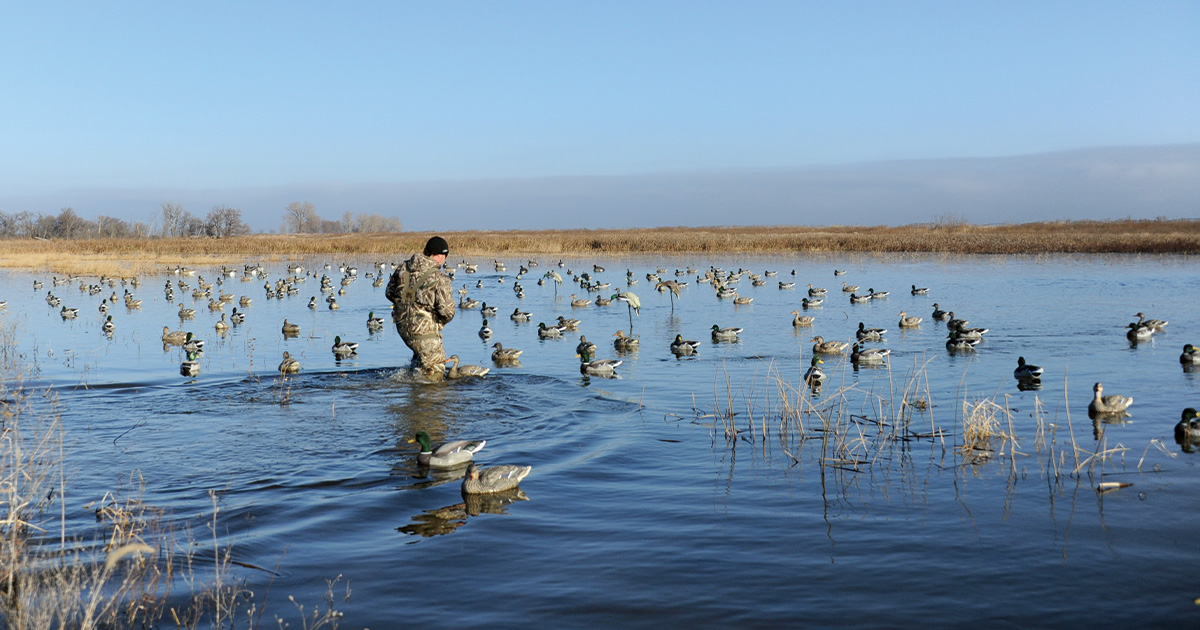Minding the Migration
Stay one step ahead of the birds this season
Stay one step ahead of the birds this season


Waterfowl often migrate in regular and predictable patterns. You can use your knowledge of these patterns to find birds.
There are few certainties in life, but one thing a waterfowl hunter can always count on is that when the migration is on, the hunting tends to heat up. Here are five ways to make the most of your hunting opportunities when ducks and geese are on the move.
Wood ducks, blue-winged teal, gadwalls, green-winged teal, and wigeon are among the ducks that will migrate based on the proportion of daylight to darkness, something known as “photoperiod.” This window of movement along the flyways tends to occur around the same time each year.
Knowing when these “calendar ducks” are likely to arrive in your area provides a good excuse to get out to the blind for a hunt. While scouting, be sure to check out areas of shallow water, which are often targeted by calendar ducks for loafing and feeding on aquatic plants and seeds.
The availability of food and open water are two other factors that impact the migration of waterfowl. So when Mother Nature delivers freezing temperatures, snow, and wind to a portion of the flyway, there is a good chance that ducks and geese will be on the move in search of better conditions. Modern technology has put the weather forecast at your fingertips, making it incredibly easy to know exactly when you need to be out in the field or on the water.
Waterfowl tend to start moving a day or two ahead of a cold front. However, some of the best hunting can take place on the clear, cold days that immediately follow the weather system. Be sure to dress warmly and be ready for a show.
Though not as dramatic as a massive cold front that sends large flocks of ducks and geese down the flyway, smaller weather systems that deliver rain can also trigger a movement of birds.
In these situations, ducks and geese will be searching for new food resources created by the arrival of water in low-lying areas. Online precipitation maps can provide clues on where to look for these hot spots. If you find one, be prepared for some of the best hunting of the season.
After hours of flying, migrating ducks and geese are anxious to find something to eat and a safe spot to rest. When they see large concentrations of waterfowl in a field or on a body of water, they know there must be good habitat and food resources there. So, when birds are on the move, team up with friends to put together the biggest decoy spread you can. This will help draw the attention of passing flocks. These “flight days” are also the time for loud, aggressive calling. A lot of decoys and a lot of calling—what’s more fun than that?
Though we tend to think of birds migrating north to south, waterfowl will move in every direction on the compass in search of food and open water. A prime example of this is a “reverse migration” of waterfowl from south to north. This usually happens when temperatures warm after a period of cold. As the ground warms and the ice melts, areas of shallow water and new food resources emerge, and waterfowl will return from the south to take advantage of them. This can often be an excellent time to hunt.
Ducks Unlimited uses cookies to enhance your browsing experience, optimize site functionality, analyze traffic, and deliver personalized advertising through third parties. By continuing to use this site, you agree to our use of cookies. View Privacy Policy